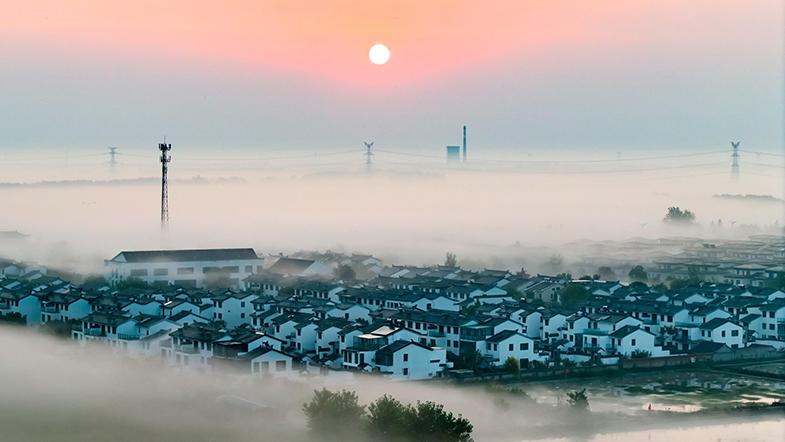Qinghai Lake regains grandeur thanks to more rainfall, ecological protection

Tourists visit a scenic spot of Qinghai Lake in northwest China's Qinghai Province, Oct. 18, 2024. (Xinhua/Zhang Long)
XINING, Nov. 5 (Xinhua) -- Qinghai Lake, China's largest inland saltwater lake, has been expanding in size continuously for the past 20 years, with the water level rising nearly 20 cm on average annually.
Satellite remote sensing in late September found that Qinghai Lake's water surface had reached over 4,650 square km, returning to its size approximately 70 years ago.
An indication of Qinghai Lake's "growth" is the partial submergence of a large mythical statue by the lakeside.
"Built in 2008, the statue stood 8.5 meters tall and was positioned over 60 meters from the lake water. However, with rising water levels, the shoreline has expanded by nearly 200 meters, leaving the statue now less than 3 meters above the water's surface," said Chen Dehui, an official with the Protection and Utilization Administration of Qinghai Lake Scenic Area.
Qinghai Lake, located in the northeastern part of the Qinghai-Xizang Plateau, is an important ecological barrier in northern China and a key stopover site for migratory birds.
In the mid-1950s, Qinghai Lake's water area was approximately 4,600 square kilometers. However, due to climate change and human activities, the lake gradually shrank over the following decades. By 2004, its area had decreased to 4,244.5 square km, accompanied by a decline in vegetation coverage and a reduction in the populations of rare and endangered wildlife.
In 2008, Qinghai adopted a plan to beef up ecological protection and comprehensive management of the Qinghai Lake basin, with a total investment of 1.57 billion yuan (about 221 million U.S. dollars) in 10 years.
Currently, the water quality in the main area of Qinghai Lake has consistently remained good over an extended period. The lake's unique species, naked carp, has seen a remarkable population increase. Additionally, the number of Przewalski's gazelle in the basin rose from 257 in 2004 to over 3,400. Resident waterbird populations have also surged, reaching 606,000 -- the highest count recorded since standardized monitoring began in 2007.
According to Sun Jianqing, an official with the Qinghai Lake National Nature Reserve Administration, the recovery of the lake surface area is due to factors including more rain in northwest China and successful ecological protection and restoration efforts in the lake region over the past 20 years.

An aerial drone photo taken on Oct. 18, 2024 shows a scenic spot of Qinghai Lake in northwest China's Qinghai Province. (Xinhua/Zhang Long)

An aerial drone photo taken on Oct. 18, 2024 shows a scenic spot of Qinghai Lake in northwest China's Qinghai Province. (Xinhua/Zhang Long)

An aerial drone photo taken on Oct. 18, 2024 shows a scenic spot of Qinghai Lake in northwest China's Qinghai Province. (Xinhua/Lyu Shuai)
Photos
Related Stories
- Population of snow leopards in Qinghai reaches 1,200, signaling key progress in endangered species protection
- County in NW China's Qinghai advances protection, governance of Heihe River Basin
- Delicate thangka paintings in NW China's Qinghai
- Thousands of migratory birds rest in wetlands of Lake Gascule in NW China’s Qinghai
- Art injects impetus into ancient castle in NW China's Qinghai
Copyright © 2024 People's Daily Online. All Rights Reserved.









